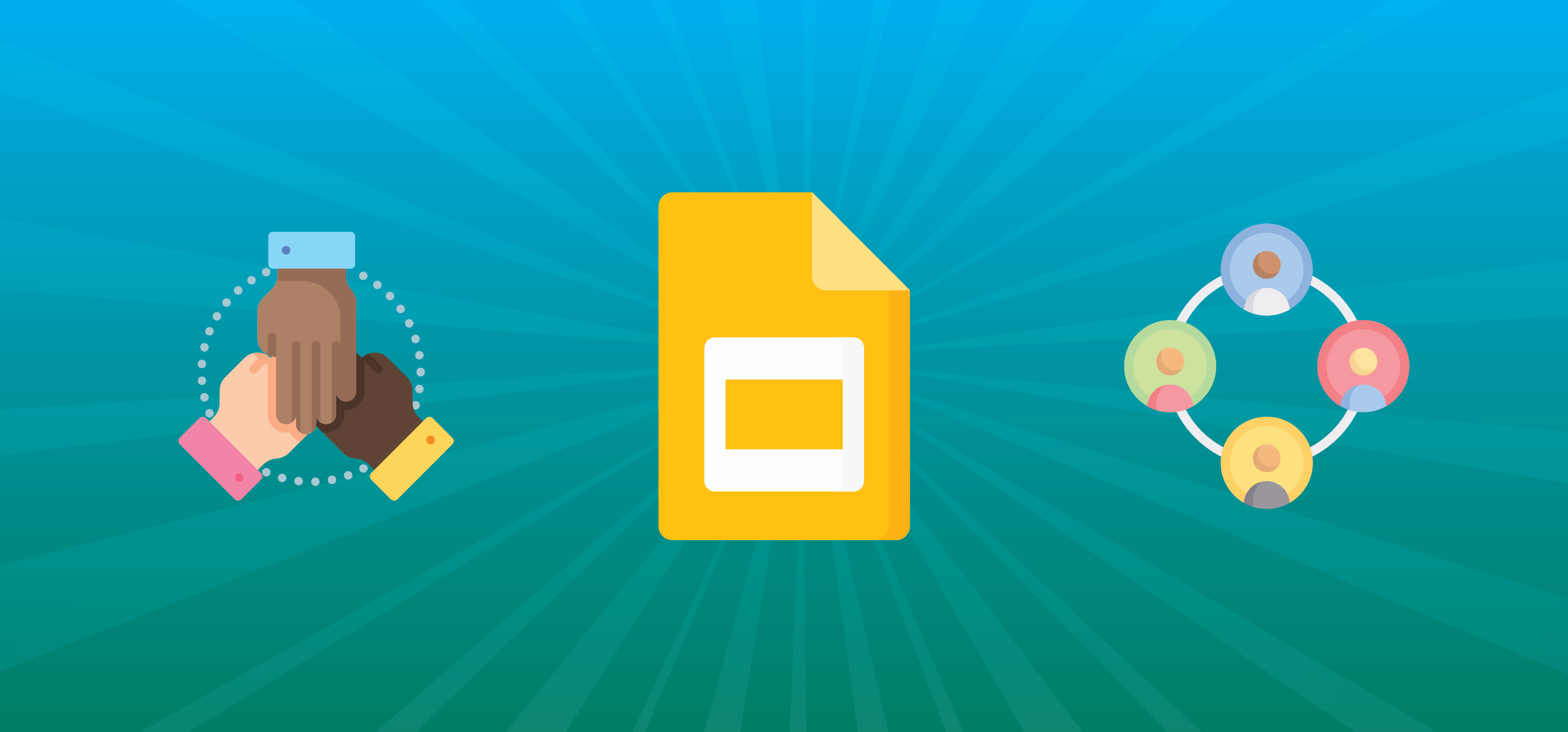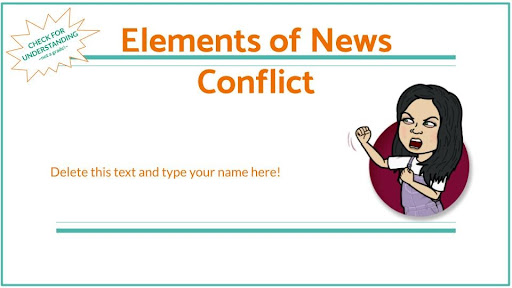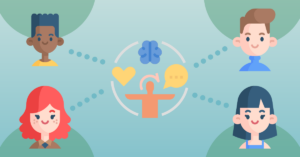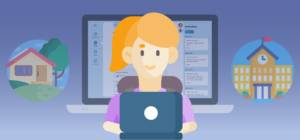
Google Slides are the little black dresses of Google tools. Slides are versatile for two reasons. They’re a way for teachers and students to present information. They can also be used to peer edit or crowdsource information in real-time or asynchronously. Ready to give it a try? Grab your scarves, belts and kitten heels—let’s take a look at three ways you’ll love to use Google Slides in K-12.
Communication: K-12 Daily schedule with Google Slides
For better or worse, parents are no longer kept in the dark about the specifics of their children’s grades. Students no longer have to take on filling in missing homework gaps or negotiating for quiz retakes. Now it’s a family affair as parents join the discussion. Is this development good? Is it bad? The answer: it just is.
Use Google Slides in K-12 to share your daily class agenda. It keeps all interested parties informed and equipped with the resources they need to succeed in your class.
Teacher benefits
Used daily, your Google Slides agenda will be a living document of your class roadmap. Add or eliminate activities, assessments or research completed or shared during the class period. This record makes it easier for you to pick up in the right spot next time. Worried about how to set up your slides? The answer, as it always does when it comes to aesthetic matters, lies on Pinterest.
Keep your slides open during the entire class period so you can make notes at the bottom of each slide. Remind yourself:
- why you went a certain way with your lesson
- what you could do differently in the future
- which learners need a little more support
It’s easy to share Slides with your class through Hāpara Workspace on a resource card. You can make the Workspace visible to parents, or you can just share the Slides address with them each semester.
Worried about students seeing your notes when they look at the daily agenda? Workspace now supports documents or slides that have been shared to the web. If you use the website address to share your Slides, they’ll appear in presentation mode, and students won’t see your notes.
Learner benefits
There is an obvious benefit to providing this always available information for your learners. They’ll know what you worked on and which tasks you assigned on the days they were absent (physically, or perhaps, mentally).
When I first started using Google Slides in K-12 to record what we did in class each day, I also added a strategy. Anyone who asked me what they’d missed had to copy down this poem and read it to the class. My intention was to remind learners in a silly way that the information they need already exists. It’s a larger lesson in student agency—they need to seek the information they desire.
Include a hyperlink to the documents you’ve shared or sites learners should access to complete their work (see “Hyperlink” section of Distance Learning with Google Slides). Be sure you’ve set anything you share to the correct privacy setting. Or share it from Workspace, where that’s taken care of for you. While a general shared “Handouts” folder is a great resource, seeing the links in the context of the daily rundown is helpful.
Parent benefits
Parents can scan through your slides for an overview of what’s going on each day. If a parent questions a grade, guide them to the slide number where the assignment appeared. Then ask them to review the day’s work with their child.
If parents are reading your slides, why not encourage them to participate sometimes? If you’re using poll questions as a bell-ringer through Google Forms, add a dropdown for “parent answers” and compare responses! Matt from Ditch That Textbook has a great template.
Collaboration: Peer editing with Google Slides
Immediate feedback is an essential part of learning, but you don’t have time to look at every piece of student work. If you’re still in the formative stage of teaching a concept, ask learners to provide feedback on one another’s work. It’s an excellent way to give them another opportunity to practice mastering a skill.
Google Slides in K-12 are also a perfect way for learners to practice skills in class or asynchronously. That’s because you can embed all of your resources into the slides for a quick temperature check. What kinds of resources? Documents, PDFs, images, links, gifs, charts and your narration. I can’t see an end to this list! Learners can complete the activity, then gather feedback from partners or small groups.
Here are some general tips for using Slides to assign an activity. Learners will complete it and then share with classmates to collect feedback.
Set up the activity to complete inside or outside of class
I created a lesson for my Intro to Journalism students asking them to explore conflict, one of the seven elements used to assess a story’s newsworthiness. I assigned this project using Workspace because keeping all of our unit resources and assignments in one spot makes less work for both students and I, but you can also post the link on Google Classroom or send it in an email.
With every Slides activity I create, I include:
- A clear statement of what they’ll be doing and how it fits into the larger unit
- Specific directions for progressing through the activity
- Examples of what I expect their responses to look like – I either create these myself or share exemplar responses from other classes. This may be the most essential part of my activity creation. If they can visualize what they need to do, it relieves a lot of their stress.
- Slides for feedback with one slide per peer editor.
- An explanation of what to do with the end product – I indicate if they need to collect peer feedback or submit it through email, Workspace or Google Classroom.
Vary your learning resources
For part one of the activity, I gave learners a “Get Started” prompt. This was so that they’d have a good working definition of conflict, which I’d introduced earlier.
For part two, I shared examples of how assessing a story’s level of conflict helps determine its newsworthiness:
- View a clip of a YouTube video (you can choose a start and stop time)
- Listen to a clip from a podcast (use a site like Audio Cutter to clip it. Then upload to your Drive and insert it from there.)
- Read an article
I directed learners to take notes during this portion of the activity. While I designed this task for students to complete during class, it’s just as effective if they complete it independently.
Make your formative assessment short but specific
Part three of the activity asked learners to find two news articles (I used Hāpara Highlights to provide a list of sites for students to choose from). They then had to explain the role of conflict in each one. They had space for each response, along with exemplars to consult when forming their responses. With the instructions, I explained the three things I was looking for in their response.
Give at least two sets of feedback
Divide learners into small groups (three is ideal) in Workspace to share their Slides on a new card. Or ask them to share their Slides address on a class list and assign groups from there.
When it’s time to leave feedback, group members can open one another’s slides. Then they can leave feedback on the appropriate slide and close the file. This is another task in the activity that learners can complete from school or home.
Collaboration: Group projects with Google Slides
There are endless ideas for gamifying, creating and personalizing learning with Google Slides in K-12. One of my favorites has always been using Slides for collaborative group work. Assign a project to small groups when a few minds would be better than one.
Examples are a review before a test or final assessment or a summary of what they learned during a presentation. Students will only have access to their group’s information unless you choose to share all of the slides later.
- Create an activity in Google Slides using the same structure described above. Create a task and space to respond for each group. Be sure all instructions and resources are evident if they’re not working in the classroom.
- On one of the slides, indicate which group should work on which slides (I did this on the second slide).
- Share the Slides in Workspace, Google Classroom or email the web address to your students. Be sure your sharing settings allow everyone to edit, as they’ll all be collaborating on one document.
- When everyone has completed their work, go over the slides as a group and discuss the responses. You can ask learners to make corrections, comment or add to groups’ answers by inserting new slides.
Two more quick Google Slides K-12 ideas
Crowdsource information
Use Google Slides in K-12 as a place learners can curate information in small groups (or individually). You can use this method for a more formal project or just for a quick in-class brainstorm. When students conduct their research (as opposed to taking lecture notes or reading a handout), they feel ownership over the information they gather. This makes them more likely to engage with the material.
Create introduction slides
Students can introduce themselves at the beginning of the school year by putting together a Google Slides presentation. They can share a few facts about themselves using images, video or text. If learners present at the start of each class, you can use the activity as a chance to teach standards-based speaking skills.
Learn what to focus on when building a culture of digital citizenship, including conversation starters for learners and educators!






